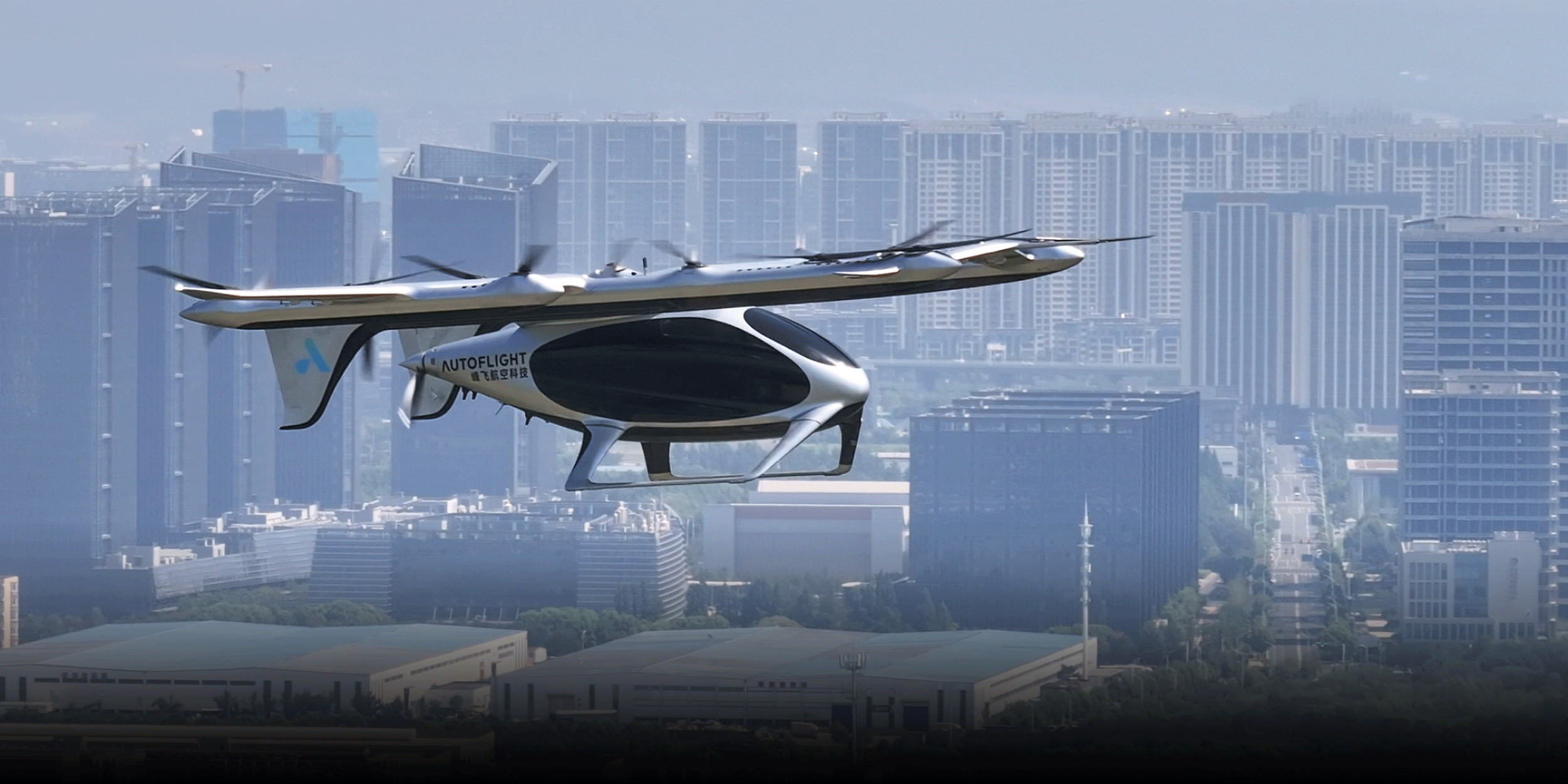
China to Create ‘Flying Car’ Pilot Zones in 6 Major Cities
China is set to take a major step toward getting its burgeoning “flying car” industry off the ground, as the government plans to allow six major cities to pilot the technology.
The policy will designate the cities as special pilot zones for electric vertical take-off and landing (eVTOL) aircraft — a form of low-altitude aircraft resembling a giant drone that can ferry passengers and goods between cities in minutes.
Experts say the move is crucial to accelerating the rollout of flying taxis and other applications of eVTOL aircraft, as it will allow the cities to bypass China’s strict national airspace controls.
The plan to create the new eVTOL pilot zones was first announced by Sun Weiguo, director of the General Aviation Business Department at the China Air Transport Association, at an industry forum in the eastern city of Suzhou earlier this week.
According to Sun, the six pilot zones will be located in the southern tech hub of Shenzhen; the eastern cities of Suzhou, Hangzhou, and Hefei; and the southwestern metropolises of Chengdu and Chongqing.
The move comes amid a broader push by China to accelerate the development of its “low-altitude economy,” an emerging sector that encompasses various forms of aircraft that travel in airspace below 1,000 meters.
The government identified the low-altitude economy as a “new growth engine” for China’s economy in March, and predicts it will develop into a 2-trillion-yuan ($140 billion) market by 2030.
In recent months, multiple Chinese cities have greenlighted trials of everything from an aerial airport shuttle service to a drone delivery service that airdrops takeout to the Great Wall.
But the government’s policymaking appears to have kicked into a higher gear this week.
On Monday, Chen Zhijie, an academician with the Chinese Academy of Engineering, revealed that the National Development and Reform Commission, China’s top economic planning body, is setting up a dedicated Low-Altitude Economy Department to coordinate policy related to the sector.
The new eVTOL pilot zones will grant local authorities in the six designated cities greater autonomy to free up airspace below 600 meters for commercial use, industry insiders told domestic media.
Detailed policy documents related to the policy have yet to be released. But the move is seen as pivotal to commercializing flying taxis. Until now, the vast majority of China’s airspace has been overseen by a combination of the National Air Traffic Control Commission and local military authorities, leading to slow approval processes for new low-altitude flight routes.
But industry insiders say that Shenzhen in particular will rapidly open up large swathes of its low-altitude airspace to commercial use once its pilot zone is set up, starting with airspace under 120 meters (defined as category W under Chinese airspace regulations) and between 120 and 300 meters (or category G airspace).
“By the end of 2025, 75% of the W-class airspace below 120 meters in Shenzhen will be open, and in 2026, the G-class airspace up to 300 meters will be gradually freed up,” Tan Chaochen, executive vice-president and secretary-general of the Shenzhen Aviation Industry Association, told domestic media.
“Once low-altitude operations in the G-class airspace are safe and mature, flights will move into airspace between 300 and 600 meters,” Tan added. “The pilot cities’ airspace will gradually open in a step-by-step manner.”
The six pilot cities are already home to rapidly developing low-altitude economies. Shenzhen, for example, has over 1,500 enterprises related to the low-altitude economy chain.
Chongqing and Chengdu are seen as having great potential for commercializing low-altitude businesses due to their status as regional transportation and logistics hubs. Suzhou, Hangzhou, and Hefei, meanwhile, have identified the sector as crucial to their plans to develop their local technology industries.
Flying taxis are already being trialed in some parts of China. In April, a company opened a route allowing passengers to zoom from Shenzhen to the neighboring city of Zhuhai in just 20 minutes.
In September, Shanghai also approved a flying taxi service connecting its eastern Pudong New Area with the neighboring city of Haining. An eVTOL aircraft can reportedly complete the 136-kilometer route in 31 minutes.
China’s eVTOL market was worth 980 million yuan in 2023, up 77.3% year over year, and is projected to reach 9.5 billion yuan by 2026, according to the Ministry of Industry and Information Technology.
The eVTOL pilot zones are also expected to benefit the logistics sector, as companies will be allowed to roll out drone delivery routes.
Phoenix Wings, a drone delivery subsidiary of the Chinese logistics giant SF Express, has reportedly already established logistics operations in Shenzhen, Suzhou, and Hangzhou.
“The key now is to achieve regular and sustainable operations,” Sun Biao, a sales director at the company, told Sixth Tone.
(Header image: AutoFlight’s eVTOL aircraft Prosperity completes a trial flight in Nanjing, Jiangsu province, Aug. 1, 2024. VCG)










